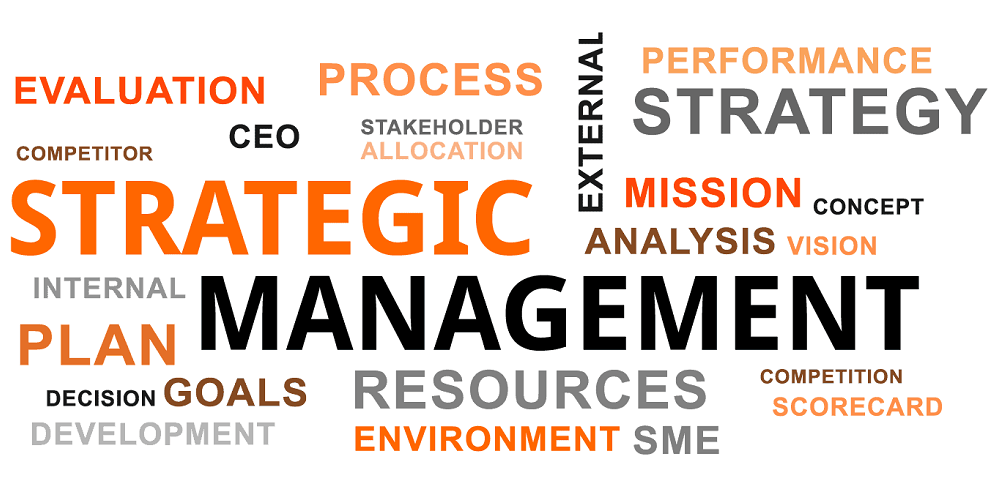
The Suitability, Acceptability and Feasibility (SAF) method helps in evaluating strategies; as per the framework, a strategy must meet three criteria for it to be successful – it must be suitable, acceptable and feasible (JOHNSON and SCHOLES, 1997).
SAF Method
- Suitability: An assessment of the underlying rationale or logic of the potential strategy. Does the strategy address the circumstances in which the organisation is operating? Is the strategy viable? Does the strategy exploit core competences?
- Acceptability: An assessment of risks and returns of a potential strategy relative to the goals of the organisation. What are the expected performance outcomes and are they consistent with stakeholder expectations?
- Feasibility: An assessment of the resources and capabilities needed to achieve the potential strategy. Has the organisation got the resources and capabilities to deliver the strategy?
Johnson & Scholes’ Criteria (2009) p241
An overview of the framework for the evaluation and selection of strategies.
- Strategic analysis: Identifies the organisation’s position.
- Strategic options: Identifies possibilities for development.
- Assessment of suitability: Establishing the rationale and screening the options.
- Acceptability: Risk & return. Stakeholder reactions.
- Feasibility: Resources and competences
- Selection of strategies.
Adapted from Johnson & Scholes, 4th edition, page 320 (Old book)
Evaluating Strategies
- Assess Performance – Economic performance, Organisational effectiveness
- Identify Gap
- Evaluate options using SAF
Economic performance refers to direct measures of success in terms of economic outcomes. i.e. product markets: for example, sales growth or market-share accounting profitability, such as profit margin or return on capital employed financial market measures such as movements in share-price.
Effectiveness refers to a broader set of performance criteria than just economic, for example measures reflecting internal operational efficiency (e.g. sales per square foot) or measures relevant to stakeholders such as employees and external communities. Balanced scorecard, triple bottom-line are other criteria to consider.
Points for Performance:
- choosing appropriate measures
- choosing appropriate time frame
- choosing appropriate comparisons
- taking a comprehensive view
- taking a critical, reflexive view
Performance Comparison:
- relative to organization’s own targets
- relative to the past
- relative to competitor or comparable organizations
- relative to shareholder expectations
Suitability
This step analyse if a strategy is good.
- Life cycle analyses: Does this fit the stage we will be at
- Positioning: Is the positioning viable?
- Business profile: Will it improve financial performance?
- Portfolio analysis: Does it strengthen the balance of activities?
- Value chain analysis: Does it improve value for money? Does it exploit core competences
In general, the questions to ask include:
- What is the rationale for this strategy?
- Does it exploit strengths and opportunities?
- Fit the organisations purpose?
- Aims, objectives and culture?
- Overcome resource weaknesses or external threats?
- Exploit core competences?
- Does the strategy offer synergistic benefits?
A strategy should effectively utilize the strengths of the organization and should also overcome any constraints that were identified during the strategic analysis.
Tools, models & techniques use to answer Suitability related questions and to see if criteria is met:
- Does the strategy address the external environment? SWOT analysis, PEST analysis
- Is the strategy viable and achievable given conditions within the environment? Five forces framework, Strategic group analysis, Market segmentation analysis
- Does the strategy build upon or exploit the strategic capabilities of the organisation? Resource analysis, Value chain analysis, Core competences analysis
- Does the strategy create/exploit synergy across the organisation? Activity mapping, Cultural web mapping
- Does the strategy fit with the current corporate org culture? Generic strategy identification, Synergy analysis – portfolio; linkages;
Acceptability
- What will stakeholders’ reaction be?
- What level of risk is involved?
- What level of profitability?
- What is the cost/benefit?
- Can the strategy be easily understood?
- Is it acceptable to stakeholders?
- Consider Lloyds takeover of HBOS?
Tools used to check Acceptability:
- What are the expected outcomes of the strategy and are they consistent with stakeholder expectations? Stakeholder mapping
- Does the strategy look attractive in terms of financial returns and the timescale required for delivery? Profitability analyses – return on capital employed; payback period & net present value of discounted cash flows
- What are the risks involved in following the strategy and how significant are they? Risk analyses – financial ratio projections; sensitivity analysis & simulations
Feasibility?
As well as assessing the feasibility of current resources and capabilities to meet the needs of particular strategies, the gaps need to be identified and an assessment made of the ability of the organisation to address these issues.
The assessment of the feasibility of a strategy depends upon answers to these questions:
Has the organisation got the resources and capabilities to deliver the strategy?
What gaps in resources and capabilities need addressing in order to ensure success?
Tools used to check Feasibility:
- Has the organisation got the resources and capabilities to deliver the strategy? Resource analysis, Value chain analysis, Core competences analysis, Activity mapping
- What gaps in resources and capabilities need addressing in order to ensure success? Resource and capability gap identification, Cultural web re-mapping, Stakeholder re-mapping
- Will your strategy beat the market?
- Does your strategy tap a true source of advantage?
- Do you know where to compete?
- Does your strategy put you ahead of trends?
- Does your strategy rest on privileged insights?
- Does your strategy embrace uncertainty?
- Does your strategy balance commitment and flexibility?
- Is your strategy contaminated by bias?
- Is there conviction to act on your strategy?
- Have you translated your strategy into an action plan?
BATheories.com is managed by a group of educators from Mumbai. We also manage the website AcademicsHQ.com. Our panel includes experienced professionals and lecturers with a background in management. BATheories is where we talk about the various business theories and models for BA (Business Administration) students.